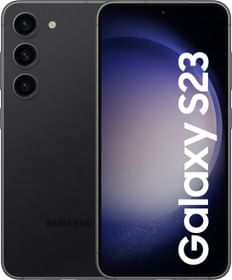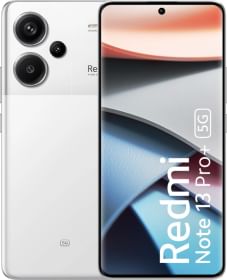Earlier in June, Xiaomi launched the 14 Civi, an upper mid-range smartphone that runs on the Snapdragon 8s Gen 3 SoC. While interested customers were still making up their minds about the handset, Xiaomi’s sister company Realme released their flagship killer handset, the GT 6.
Interestingly, both phones run on the same processor and provide similar features, confusing buyers about where to put their money. Luckily, we’ve put the two smartphones head-to-head in this detailed comparison. Without any further ado, let’s start with one of the hottest smartphone comparisons of the month: Realme GT 6 Vs. Xiaomi 14 Civi.
ALSO SEE: Bone Conduction Headphones Price List
Realme GT 6 Vs. Xiaomi 14 Civi: Design

Although design is a subjective aspect, let’s go through the basics. The GT 6 features a punch-hole display on the front, with minimal bezels on all the sides. Further, the rear panel features a dual-texture design, wherein the length of the triple-camera setup (like the Pro iPhones) is covered with a shiny element, whereas the rest of the panel has a matte finish.
- Realme GT 6 is available in two colors: Fluid Silver and Razor Green

The Xiaomi 14 Civic features a pill-shaped cutout (for housing two camera sensors) on the front, along with minimal bezels. On the back, the phone features a circular camera module with three sensors and an LED flash.
- Xiaomi 14 Civi is available in three colors: Cruise Blue, Matcha Green, Shadow Black
Realme GT 6 Vs. Xiaomi 14 Civi: Screen

The Realme GT 6 features a 6.78-inch LTPO AMOLED screen that features a 120Hz refresh rate and a peak brightness of 6,000 nits. However, the phone reaches its peak brightness in direct sunlight. Otherwise, the content goes up to 1,600 nits of typical brightness, which is still good. The resolution on the Realme GT 6 is 450 pixels per inch, while the screen is protected with Corning Gorilla Glass Victus 2.
Some additional screen features include a five-star rating from SGS for sunlight readable and Esports display, a TUV Rheinland strobe-free certification, and Dolby Vision. The LTPO technology can change the refresh rate from 1Hz to 120Hz. In addition, the phone supports 2160Hz PWM Diming and 100 percent of the DCI-P3 color space.
ALSO SEE: Smartwatches With SIM Card Support in India 2024

The Xiaomi 14 Civi sports a slightly smaller 6.55-inch AMOLED screen that supports a 120Hz refresh rate and a peak brightness of 3,000 nits. Being smaller, the screen packs more pixels in the same area, reaching 460 pixels per inch. Like the GT 6, the 14 Civi also features Corning Gorilla Glass Victus 2 protection.
Additional screen features of the 14 Civi include Dolby Vision, HDR10+, and DC+ 2160Hz PWM dimming. Additionally, the phone has three certifications from TUV Rheinland, including one for low blue light, one for flicker-free, and one for rhythm-friendly certifications.
While both brands have put in a lot of effort to make their screens stand out from the competition, this particular aspect of the comparison boils down to users’ preferences. If someone wants a larger screen, the Realme GT 6 has got them covered. Those looking for a more compact handset can go with the 14 Civi.
Realme GT 6 Vs. Xiaomi 14 Civi: Processor

This is where the comparison gets interesting. Both smartphones run on the Snapdragon 8s Gen 3 (4nm) SoC, which is based on the same fabrication technology as the Snapdragon 8 Gen 3 SoC. The octa-core processor ships with one prime core clocked at 3.0GHz, four performance cores at 2.8GHz, and three balanced cores at 2.0GHz.
To give you a perspective, the Snapdragon 8s Gen 3 SoC scores around 2,000 points in the single-core and 5,270 points in the multi-core Geekbench score. On Antutu, the phone scores around 1.5 to 1.6 million points. From the benchmarks, it is clear that the processor isn’t as good as the Snapdragon 8 Gen 3, but it easily rivals the Snapdragon 8 Gen 2, offering flagship-tier performance at a relatively affordable price.
While both phones feature the same processor, the memory and storage configurations differ.
The Realme GT 6 comes in three configurations:
- 8/256GB
- 12/256GB
- 16/512GB
In contrast, the Xiaomi 14 Civi comes in the following configurations:
- 8/256GB
- 12/512GB
The GT 6 ships with higher RAM on the top trim, giving it an edge in handling multiple apps or memory-intensive tasks. It is important to mention that both phones feature LPDDR5X RAM and UFS 4.0 storage.
Hence, in terms of pure performance, Realme GT 6’s top model should surely have an edge over the 14 Civi’s top trim. However, the baseline versions of both smartphones should provide a similar performance.
ALSO SEE: Mobile Phones With IP69 Rating
Realme GT 6 Vs. Xiaomi 14 Civi: Cameras

The Realme GT 6 features a 50MP (f/1.69, 85-degree) Sony LYT-808 primary sensor, which has an equivalent focal length of 22.86mm. The secondary camera is an 8MP (f/2.2, 112-degree) Sony IMX355 sensor, and there’s another 50MP (f/2.8, 49.5-degree) Samsung S5KJN5 2x telephoto sensor. On the front, users get a 32MP (f/2.45, 90-degree) selfie shooter.
While the rear cameras on the GT 6 can shoot videos in 4K at 60 fps, the front camera is limited to 30 fps. While there are other camera features, one that stands out is the Super Nightscape Mode, which renders true-to-life colors even in dark environments.

Xiaomi, on the other hand, has partnered with Leica for the optics of the 14 Civi. For instance, there’s a 50MP (f/1.63, 25mm) Light Hunter 800 primary sensor. To click zoomed-in pictures, users get the Leica 50MP (f/1.98, 50mm) telephoto sensor. Further, there’s a 12MP (f/2.2, 120-degree) ultrawide sensor.
On the front, users get a dual 32MP selfie setup, wherein one sensor supports autofocus, and the other has a wider field of view for accommodating more people in a selfie. Together, the sensors provide three shooting profiles at 0.8x, 1x, and 2x. Unlike the Realme GT 6, the 14 Civi can record HDR videos at 4K 30 fps and regular videos at 60 fps. The front camera can only shoot 4K videos at 30 fps.
The collaboration with Leica also brings two photographic styles, including the Authentic Look and the Vibrant Look, along with Leica filters. Users also get features like motion tracking focus and Ultra Night video mode.
Clearly, both phones have a similar camera setup, which makes this a tricky part of the comparison. While both brands have packed the cameras with features, the Xiaomi 14 Civi provides additional perks over the GT 6, such as the dual-front-facing camera and the ability to record HDR videos.
ALSO SEE: Best 17-inch Laptops Price List in India 2024
Realme GT 6 Vs. Xiaomi 14 Civi: Battery & Charging

When it comes to battery life, Realme’s latest flagship killer is the better choice. The handset flaunts a massive 5,500 mAh battery that supports 120W SUPERVOOC charging, so it should last longer and charge faster than the 14 Civi’s 4,700 mAh battery, which supports 67W wired charging.
Realme GT 6 Vs. Xiaomi 14 Civi: Software & Updates

Out of the box, the GT 6 runs on Realme UI 5.0 based on Android 14. Further, the company has promised to provide three Android updates (which should take the phone up to Android 17) and an additional year of security updates. Moreover, the GT 6 should be well-supported for the next four years.
The 14 Civi runs on Xiaomi’s new HyperOS, which is also based on Android 14. Like the GT 6, this phone will also receive three years of major Android OS updates, followed by another year of security updates. In conclusion, both brands provide similar software support.
ALSO SEE: Snapdragon 8 Gen 3 Mobile Phones
Realme GT 6 Vs. Xiaomi 14 Civi: Conclusion
Fortunately, or unfortunately, the Realme GT 6 and the Xiaomi 14 Civi are two very similar smartphones, minor differences aside. In our opinion, smartphones share 80 percent of their features with slight changes in the design, camera setup, and operating system. This brings down the comparison to the final aspect: price.
- Realme GT 6 (8/256GB): Rs. 40,999
- Realme GT 6 (12/256GB): Rs. 42,999
- Realme GT 6 (16/512GB): Rs. 44,999
Currently, the company is offering an instant discount of up to Rs. 4,000 on the models, which brings down the effective price of the phone to Rs. 36,999 (for the base model).
- Xiaomi 14 Civi (8/256GB): Rs. 42,999
- Xiaomi 14 Civi (12/512GB): Rs. 47,999
Xiaomi is also offering up to Rs. 3,000 instant discount with ICICI and HDFC Bank cards, which brings down the effective price of the phone to Rs. 39,999 (for the base model).
Hence, considering the introductory offer and aggressive pricing, the Realme GT 6 offers slightly more value for money than the Xiaomi 14 Civi, saving buyers Rs. 3,000. Further, the GT 6’s top model is still cheaper than the 14 Civi top model while offering more RAM.
SO SEE: Tata Sunroof Cars in India
You can follow Smartprix on Twitter, Facebook, Instagram, and Google News. Visit smartprix.com for the latest tech and auto news, reviews, and guides.
































